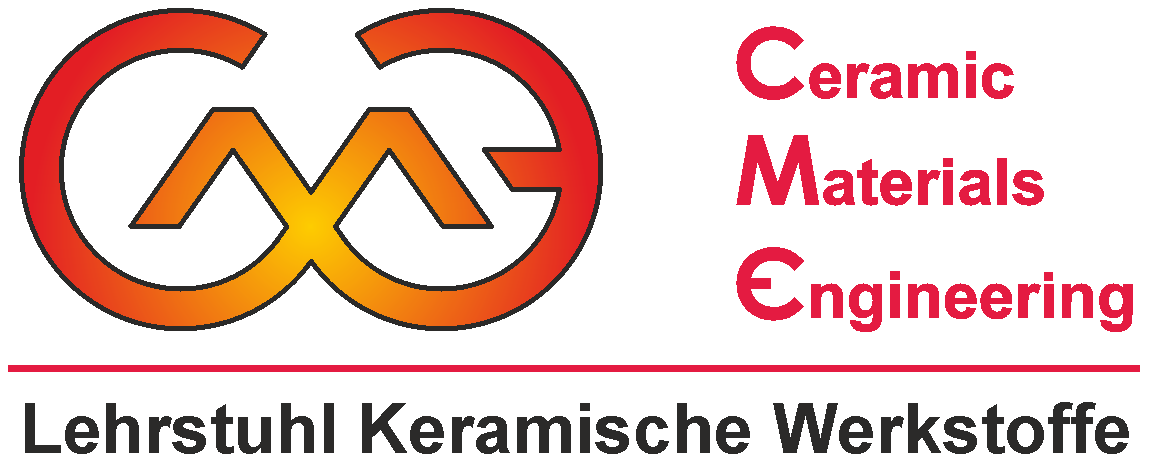High-temperature electrolysis for the production of green hydrogen (HTs: HTEL-Stacks - Ready for Gigawatt)
Compared to other electrolysis technologies, such as PEM electrolysis (PEM = Proton Exchange Membrane) and alkaline electrolysis, high-temperature electrolysis (HTEL) is characterized by higher efficiency and low operating costs. For this reason, this technology represents a promising approach for the production of green hydrogen.
In the H2Giga project "HTs: HTEL Stacks - Ready for Gigawatt", we are researching electrolyte-supported cells based on a ZrO2 electrolyte. In this design, the electrolyte is the strength-determining component of the membrane electrode assembly (MEA). When an electrical voltage is applied and water and air are supplied, the water within the cathode is decomposed into hydrogen as well as oxygen ions. These ions are conducted through the ceramic electrolyte to the anode for charge equalization, where they enrich the air accordingly. The resulting hydrogen is conducted out of the MEA at the cathode and can then be further transported and stored.
The core element to produce green hydrogen via the HTEL is thus the solid oxide cells or stacks. These represent a key to the large-scale and cost-effective production of green hydrogen at high base load. However, to serve the hydrogen market with large-scale HTEL cells and stacks in the future, further development steps are needed in terms of lifetime, material costs, efficiency, manufacturing technologies as well as upscaling of production. The H2Giga project addresses the development and research focus on exactly these topics and thus contributes significantly to the realization of the National Hydrogen Strategy and the associated upscaling of electrolysis technology on a megawatt scale. Within the framework of the project, Sunfire, as an electrolyze manufacturer, is responsible for the overall coordination and, together with partners from industry and research, is working on issues relating to the industrialization of HTEL cells and stacks.
The Chair of Ceramic Materials Enigneering (University of Bayreuth) is responsible for the characterization of ceramic powders as well as new and operated electrolyze cells. Here, the research object is the analysis of the microstructure as well as the testing and investigation of the thermomechanical properties at room temperature and up to 850 degrees Celsius. The mechanical characteristics are determined by double-ring bending tests as well as tensile tests. For this purpose, the chair's new, unique high-temperature testing facility, which went into operation at the end of 2020 and was financed by funds from the German Research Foundation (DFG) and the TechnologieAllianzOberfranken, is used. In addition to light and scanning electron microscopy, X-ray diffraction and IR spectroscopy are used as methods for microstructure analysis. Based on this, computer-aided analyses of the recorded microstructures are developed and applied. The goals of the work of the chair are the correlation of the microstructure with the thermomechanical properties, in particular with regard to the aging mechanisms, as well as the development of a strategy for the prediction of these mechanisms.
Background
"HTs: HTEL Stacks - Ready for Gigawatt" is one of the scale-up projects within the lead project H2Giga. The hydrogen lead projects form the largest research initiative of the Federal Ministry of Education and Research (BMBF) to date on the topic of energy transition. In the industry-led flagship projects, industry and science are jointly developing solutions for the German hydrogen economy: series production of large-scale electrolysers (H2Giga), production of hydrogen at sea (H2Mare), technologies for the transport of hydrogen (TransHyDE).
The BMBF-funded hydrogen lead projects are the result of an ideas competition: science, industry and civil society were invited to submit ideas for large-scale hydrogen projects. More than 240 partners have come together in this way and are to receive a total of around 740 million euros in funding. The lead projects will be funded over a period of four years.
Project data
Duration: 05/2021 - 03/2025
Sponsor: German Federal Ministry of Education and Research
Project partners: Sunfire GmbH, Fraunhofer IKTS (Department of Energy Systems), KIT (Institute for Applied Materials, Electrochemical Technologies IAM-ET as well as Laboratory for Electrode Microscopy LEM), DLR (Institute for Technical Thermodynamics TT), European Institute for Energy Research (EIFER), Kerafol Keramische Folien GmbH & Co. KG, XENON Automatisierungstechnik GmbH, HORIBA Fuelcon GmbH

